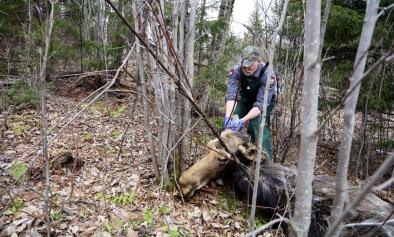Climate change reshuffles northern species within their niches
Study key findings & significance
- Four decades of climate change have led to significant reshuffling of species within their climatic niches, and that these impacts were most pronounced at higher latitudes.
- The study leverages the unique database of long-term monitoring data in Finland and reveals just how large the impacts of climate change have been. The researchers collated distribution data for 1,478 species of birds, mammals, butterflies, moths, plants and freshwater phytoplankton, and analyzed species-specific responses to multiple climatic variables.
- The study provides important insights on the effects of climate change on biodiversity.
Author quotes
"Our results reveal a clear signal of more species responses towards the pole, where changes in climate have also been stronger. We also showed that the importance of temperature and snow duration varied between the different groups of species."
Laura Antão, study lead author
"If species which depend on one another respond in different directions, or to different variables, then this can affect entire communities and ecosystems."
Benjamin Weigel, study co-author
"In our study, community changes were mainly driven by species being favored or disfavored by the changes in climate, and thereby occurring more or less frequently in local species combinations. This seems to be another key effect of fast climate change—that now needs to be accounted for.
Anna-Liisa Laine, study co author
Abstract
Climate change is a pervasive threat to biodiversity. While range shifts are a known consequence of climate warming contributing to regional community change, less is known about how species’ positions shift within their climatic niches. Furthermore, whether the relative importance of different climatic variables prompting such shifts varies with changing climate remains unclear. Here we analysed four decades of data for 1,478 species of birds, mammals, butterflies, moths, plants and phytoplankton along a 1,200 km high latitudinal gradient. The relative importance of climatic drivers varied non-uniformly with progressing climate change. While species turnover among decades was limited, the relative position of species within their climatic niche shifted substantially. A greater proportion of species responded to climatic change at higher latitudes, where changes were stronger. These diverging climate imprints restructure a full biome, making it difficult to generalize biodiversity responses and raising concerns about ecosystem integrity in the face of accelerating climate change.
Related Content



